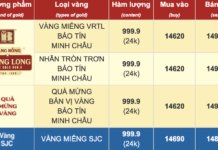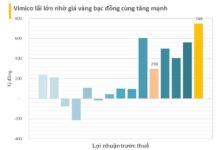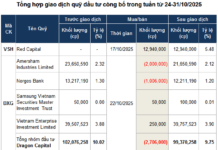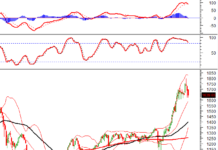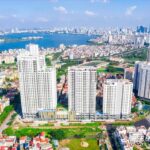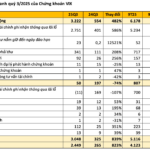
Nghệ An as “a tight shirt”
According to the Nghệ An portal, the province’s People’s Committee recently had a working session with the inter-sectoral inspection team to assess the current state of the development of the expanded Vinh city (led by the Ministry of Construction) on the Scheme for classification of the expanded Vinh city and report on the assessment of the level of development of the proposed urban infrastructure in the planned area for establishing wards, as well as other urban development issues in Nghệ An province.
The Inner city area within the scope of the proposed urban classification scheme includes the 16 existing wards of Vinh city (Bến Thủy, Cửa Nam, Đội Cung, Đông Vĩnh, Hà Huy Tập, Hồng Sơn, Hưng Bình, Hưng Dũng, Hưng Phúc, Lê Lợi, Lê Mao, Quán Bàu, Quang Trung, Trung Đô, Trường Thi, Vinh Tân); 07 existing wards of Cửa Lò town (Nghi Hải, Nghi Hòa, Nghi Hương, Nghi Tân, Nghi Thu, Nghi Thủy, Thu Thủy) and 04 proposed administrative units to be established as wards (Hưng Đông, Hưng Lộc, Nghi Phú, Nghi Đức).
The Outer city area includes: 05 communes of Vinh city (Hưng Chính, Hưng Hòa, Nghi Ân, Nghi Liên, Nghi Kim) and 04 communes of Nghi Lộc district (Nghi Xuân, Phúc Thọ, Nghi Thái, Nghi Phong).
In comparison with the current regulations in Resolution No. 26/2022/UBTVQH15 of the Standing Committee of the National Assembly on urban classification, Vinh city (according to the proposed urban boundary) meets the criteria for a type I city with an evaluation score of 83.24/100.
During the working session, Deputy Minister of Construction, Nguyễn Tường Văn, suggested the need for more precise and stronger writing regarding the development needs and expansion of the development spaces because the province is currently “like a tight shirt” in terms of development. Changing the function of the urban area will help to develop the economy and society not only for Vinh City but also for the region. The province has both awareness and orientation for infrastructure investment from an early stage, so at this point, the conditions are ripe to evaluate this content.

In terms of provincial leadership, Chairman of the People’s Committee Nguyễn Đức Trung said that the development and expansion of Vinh city is necessary, and the legal and political basis for expanding Vinh City is also clear. Nghệ An province identifies the expansion of Vinh City as one of the main driving forces for the province’s development in the coming years. Nghệ An province is determined and desires to complete the Scheme for classifying the expanded Vinh city towards a coastal city by 2024.
Cửa Lò town to be merged, population to increase nearly 4 times
Nghệ An is the largest province in the country, with an area of about 16,486.5 km2 and an average population of about 3,409.8 thousand people. The population density is equivalent to 207 people/km2.
In terms of geographical location, Nghệ An belongs to the North Central Coast region. It borders Hà Tĩnh city to the south, Thanh Hóa province to the north, the sea to the east, and Laos to the west. Nghệ An is also located on key national routes such as the North-South Highway, Ho Chi Minh road, National Highway 15, National Highway 1A, and the North-South railway route.
Previously, at the regular meeting of the provincial People’s Committee in March 2023, the People’s Committee agreed to merge the entire Cửa Lò town with an area of 29 km2 and a population of more than 57,000 people, including 7 administrative units directly under Cửa Lò town.
At the same time, adjust the entire natural area and current population scale of 4 communes in Nghi Lộc district, including Nghi Xuân, Phúc Thọ, Nghi Thái, Nghi Phong. In addition, establish 4 wards based on the current natural area and population scale of 4 communes, including Hưng Đông, Hưng Lộc, Nghi Phú, Nghi Đức.
After the expansion, Vinh City will have a natural area of 166.24 km2 (reaching 110.67%); a population of 575,718 people (nearly 384% increase), with 36 administrative units at commune level (360%) including 27 wards and 9 communes.
Nghi Lộc district will have a natural area of 313.18 km2 (nearly 70%); a population of 206,042 people (reaching 171%); with 25 administrative units at commune level (reaching 192.31%) including 24 communes and 1 township.
After the expansion, Vinh city will focus on investing in 16 key transportation projects, with a total planned investment of 4,521 billion VND.










